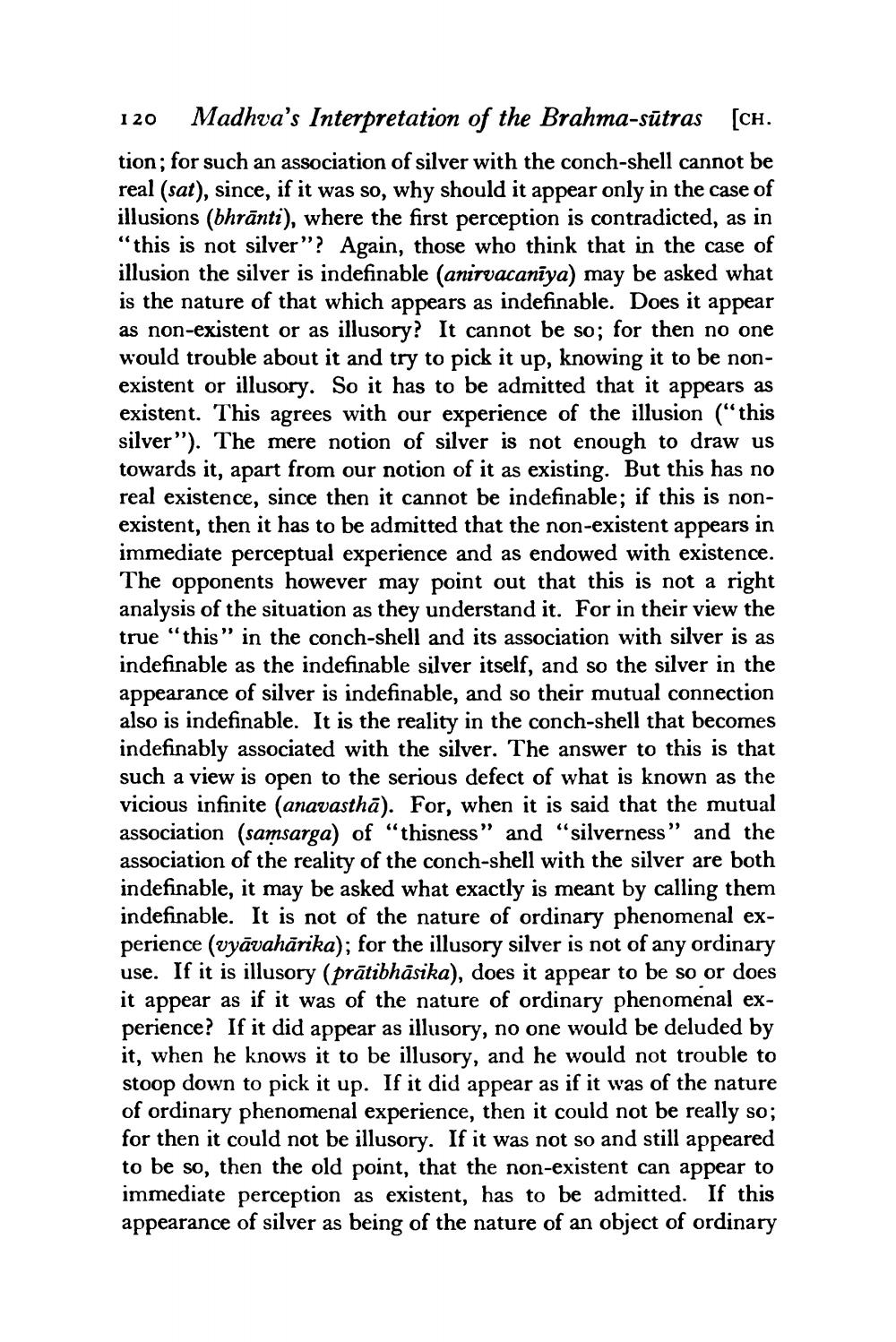________________
120 Madhva's Interpretation of the Brahma-sūtras [CH. tion; for such an association of silver with the conch-shell cannot be real (sat), since, if it was so, why should it appear only in the case of illusions (bhrānti), where the first perception is contradicted, as in "this is not silver”? Again, those who think that in the case of illusion the silver is indefinable (anirvacanīya) may be asked what is the nature of that which appears as indefinable. Does it appear as non-existent or as illusory? It cannot be so; for then no one would trouble about it and try to pick it up, knowing it to be nonexistent or illusory. So it has to be admitted that it appears as existent. This agrees with our experience of the illusion (“this silver"). The mere notion of silver is not enough to draw us towards it, apart from our notion of it as existing. But this has no real existence, since then it cannot be indefinable; if this is nonexistent, then it has to be admitted that the non-existent appears in immediate perceptual experience and as endowed with existence. The opponents however may point out that this is not a right analysis of the situation as they understand it. For in their view the true “this" in the conch-shell and its association with silver is as indefinable as the indefinable silver itself, and so the silver in the appearance of silver is indefinable, and so their mutual connection also is indefinable. It is the reality in the conch-shell that becomes indefinably associated with the silver. The answer to this is that such a view is open to the serious defect of what is known as the vicious infinite (anavasthā). For, when it is said that the mutual association (samsarga) of “thisness” and “silverness” and the association of the reality of the conch-shell with the silver are both indefinable, it may be asked what exactly is meant by calling them indefinable. It is not of the nature of ordinary phenomenal experience (vyāvahārika); for the illusory silver is not of any ordinary use. If it is illusory (prātibhāsika), does it appear to be so or does it appear as if it was of the nature of ordinary phenomenal experience? If it did appear as illusory, no one would be deluded by it, when he knows it to be illusory, and he would not trouble to stoop down to pick it up. If it did appear as if it was of the nature of ordinary phenomenal experience, then it could not be really so; for then it could not be illusory. If it was not so and still appeared to be so, then the old point, that the non-existent can appear to immediate perception as existent, has to be admitted. If this appearance of silver as being of the nature of an object of ordinary




